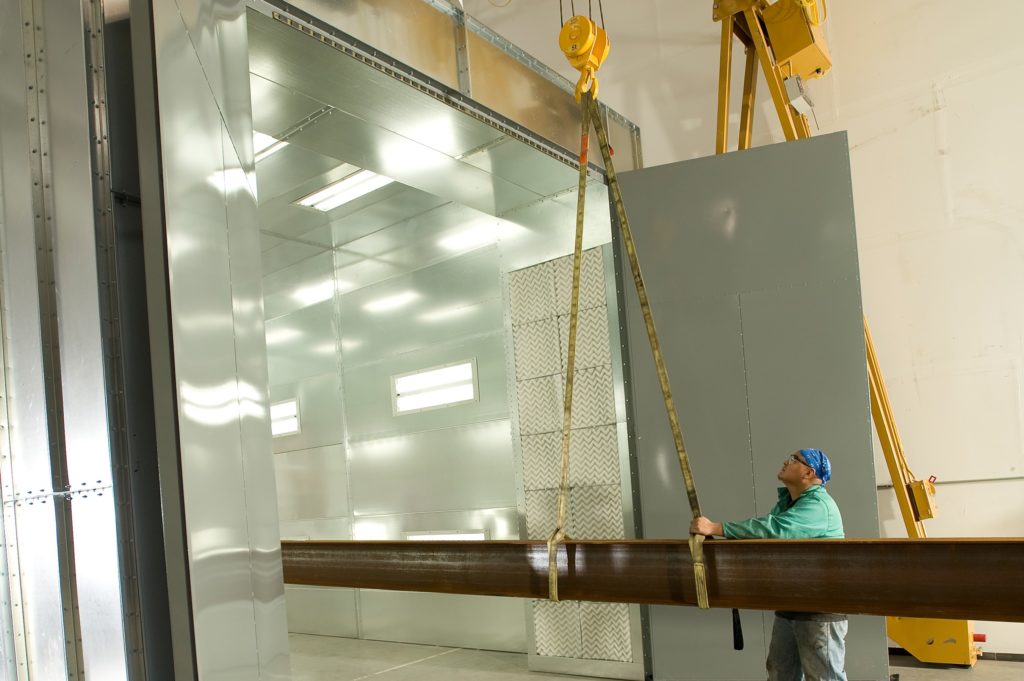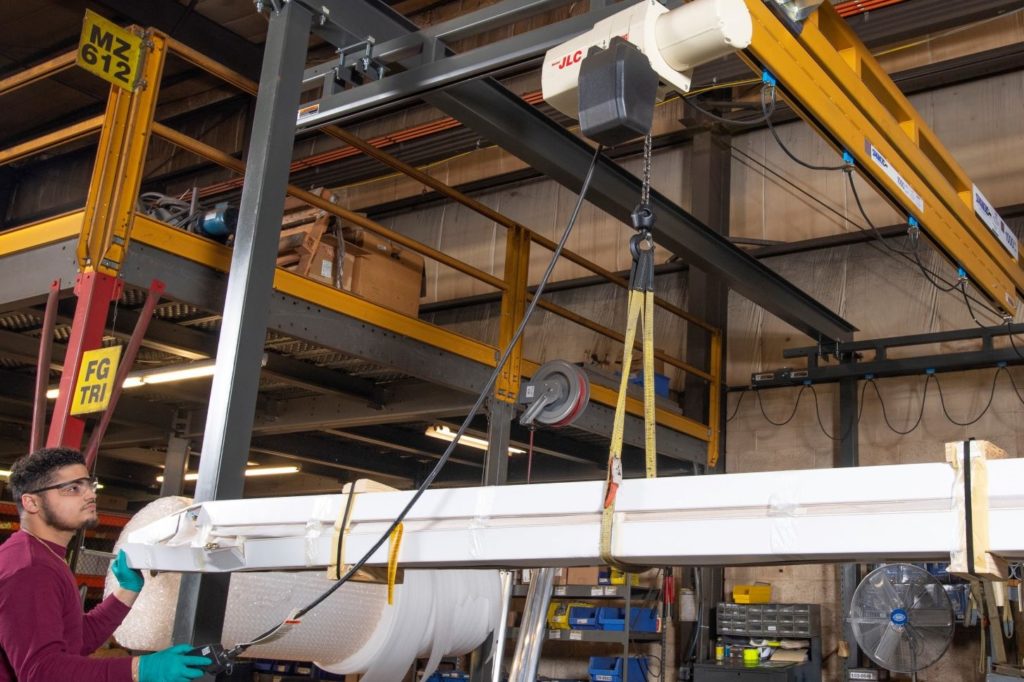
Rigging Techniques Overview
Sep 14, 2020
Rigging is an important part of all crane lifting operations. There are many factors to consider when preparing for a lift. Below are some of the factors and techniques to consider when planning a lift to ensure proper rigging. This information is for general purposes only, should not be considered a comprehensive guide to lifting and rigging, and is not a substitute for thorough review and understanding of applicable government regulations.
Sling Hitch
When determining how to rig a load, the type of load you are lifting can dictate what kind of hitch you need to use. A Straight Line Hitch, or Vertical Hitch, uses a single sling with one end connected to the load and the other end connected to the hoist, crane, or lifting device. This type of hitch is ideal for loads with equally distributed weight that are easy to balance. The Double Line Hitch is similar, but it uses two slings attached to the lifting equipment and to the load at different locations. This hitch is ideal for longer loads that can’t be balanced easily with a single sling.

A Basket Hitch uses a single sling that passes around the load with both ends connected to the hoist, crane, or lifting device. The Choker Hitch also uses a single sling passed around the load, but it has one end attached to the lifting equipment and the other end attached back to the sling itself in a loop around the load.
Basket and choker hitches are great for loads that have no direct connection points, such as large pipes or shafts. Additionally, both types can be used to lift loose loads by wrapping the sling around the load to create a double wrap basket or choker hitch. Double wrap hitches work well for loose loads, such as a bundle of pipes. Basket and choker hitches can also be used with a lifting beam to stabilize longer loads. Consult with the sling manufacturer for more information on different types of sling hitches.
Capacity
Lifting capacity is one factor that everyone knows is important for cranes. You can’t lift 15 tons with a crane that has a 10-ton capacity. This rule is equally true for slings. Every rigging sling has a maximum load capacity specified by the manufacturer, and different types of hitches can affect that capacity.
A straight line hitch is typically the basis for the standard capacity of any given sling. If you use the sling in other configurations, the capacity will likely change. For example, using two slings for a double line hitch combines the capacities of the individual slings into a greater capacity. However, the capacity can be reduced as the angle between the slings increases.

Similarly, a vertical basket hitch—where both ends are connected vertically to separate connection points—will typically increase the capacity of the sling. However, the capacity can decrease if both ends are connected at a single point, because the slings are loaded at an angle. The capacity decreases further as the angle between the legs increases. When using a choker hitch, the capacity is almost always lower than the standard capacity of the sling.
All of these conditions affect the capacity of a sling. To ensure loads are rigged safely, check with the sling manufacturer for sling capacities in different hitch configurations.
Edge Protection
Even if you have the correct sling capacity and hitch, lifting a load can be dangerous without edge protection. Any sling that comes in contact with a protrusion, edge, corner, or rough or abrasive surface can be damaged during a lift if left unprotected.
Without edge protection, a sharp edge can cut into a sling and cause failure during a lift. Even if a sling doesn’t fail during a lift, it can be permanently damaged, leading to the possibility of failure during future lifts.
To prevent permanent damage to slings, edge protection should be placed between sharp edges and the sling. Rubber pads, separate segments of sling webbing, wire mesh pads, and even specially engineered padding can be placed over a load to soften sharp edges. These types of edge protection can effectively reduce the damage potential with sufficient padding thickness. Specialized edge protection equipment is also available to change a sharp edge to a rounded surface. This equipment can eliminate the concern of sling abrasion by eliminating the sharp edge.
When it comes to rigging heavy loads, it is crucial to follow the safest rigging practices. The type of hitch you use, the sling capacity, and edge protection requirements are just some of the factors to consider when lifting a load. The size and center of gravity of a load, available lifting points, height restrictions, below-the-hook lifting devices, and many other factors must also be considered. A Qualified Person should review every lift plan to ensure safety requirements are met and applicable regulations are followed. For complete information on safe rigging practices, contact an OSHA certified Qualified Rigger training service provider, available online.
Categories
Share this post
Contact us
Looking for the perfect fall protection equipment? Let us help!
